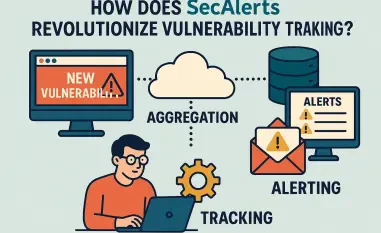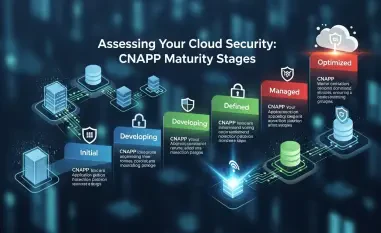In the ever-evolving landscape of cybersecurity, Malik Haidar stands out as a key figure with a wealth of experience in managing cyber threats. His expertise not only encompasses analytics and intelligence but also marries business strategies with advanced cybersecurity techniques. In our conversation today, we delve into the current vulnerabilities affecting Citrix NetScaler instances and the broader implications for organizations worldwide.
Can you explain what Citrix NetScaler is and its primary function?
Citrix NetScaler is essentially an application delivery controller. It helps manage, optimize, and secure the delivery of applications, often acting as a gateway to facilitate streamlined access and efficiency. Its primary function is to ensure applications are running smoothly and securely, especially in environments where there’s a high volume of traffic.
What are the critical vulnerabilities recently disclosed in Citrix NetScaler instances?
The vulnerabilities in question are CVE-2025-5777 and CVE-2025-6543. Both are critical and have drawn attention due to their severity. CVE-2025-5777 deals with insufficient input validation that can lead to serious security issues, while CVE-2025-6543 can result in memory overflow, both of which can destabilize affected systems.
How are these vulnerabilities, CVE-2025-5777 and CVE-2025-6543, described?
CVE-2025-5777 involves insufficient input validation, which can open up systems to unauthorized data access. CVE-2025-6543, on the other hand, is described as a memory overflow issue. Both vulnerabilities mainly target instances configured as gateways for remote access or AAA virtual servers, which are crucial for maintaining secure and efficient network operations.
What is the impact of the CVE-2025-5777 vulnerability on NetScaler instances?
The impact is quite significant. Successful exploitation could lead to unintended data being read out-of-bounds, compromising the security and integrity of the data. This can result in unauthorized access and potential data leaks, posing a considerable risk to organizations relying on these services for secure remote communications.
What does successful exploitation of CVE-2025-6543 lead to on NetScaler instances?
For CVE-2025-6543, successful exploitation may lead to unintended control flow and even denial of service. This means that an attacker could potentially crash the server or disrupt its operations, leading to downtime and affecting the availability of services provided by the NetScaler instances.
Why are the vulnerabilities referred to as CitrixBleed and CitrixBleed2?
These names likely draw a parallel to the infamous Heartbleed vulnerability, to emphasize the nature and potential severity of these security issues. They highlight the potential for information leakage, akin to ‘bleeding’ data from the system due to the flaws present.
How have cybersecurity firms observed the exploitation of these vulnerabilities?
Security firms, like ReliaQuest, have noted evidence of CVE-2025-5777 being exploited in the wild, particularly for gaining unauthorized access. This suggests not only the potential for initial breaches but also the tendency for these vulnerabilities to serve as entry points for further, more complex attacks.
What actions has Citrix recommended to address these vulnerabilities?
Citrix has been proactive in urging all users to apply the necessary patches immediately. They also highlight the importance of keeping NetScaler instances updated to mitigate any potential exploitation successfully. These updates are critical in preventing unauthorized access and maintaining the integrity of operations.
Why did the US cybersecurity agency CISA add CVE-2025-6543 to its Known Exploited Vulnerabilities catalog?
The inclusion in the KEV catalog by CISA underscores the critical risk that CVE-2025-6543 presents. It’s a recognition of the vulnerability being actively exploited, hence the urgency for federal agencies—and really any affected entity—to swiftly patch and secure their systems to prevent potential breaches.
What steps should organizations take in response to the vulnerabilities in Citrix NetScaler?
Organizations should prioritize patching their systems without delay. Additionally, they need to review their network security settings, ensuring a robust monitoring system is in place to detect any unusual activities. Regular audits and updates can further aid in safeguarding against such vulnerabilities.
How many web-accessible NetScaler deployments have been seen by Censys?
Censys has identified over 69,000 web-accessible NetScaler deployments. However, it’s worth noting that only a fraction of these, approximately 130 instances, were confirmed to be impacted by these specific vulnerabilities.
What does the Shadowserver Foundation data reveal about exposed NetScaler servers?
The data demonstrate that a significant number of servers remain vulnerable. As of late June, over 1,200 are susceptible to CVE-2025-5777, and more than 2,100 are exposed to CVE-2025-6543. This highlights a substantial security risk, emphasizing the need for timely and comprehensive patch application.
Why is there a significant interest from threat actors in exploiting Citrix product vulnerabilities?
Citrix products often form the backbone of enterprise networks, managing critical data and workflows. Exploiting these vulnerabilities provides attackers with an inviting opportunity to disrupt operations or access sensitive data. This high-impact potential makes Citrix products an attractive target for cybercriminals.
Do you have any advice for our readers?
Absolutely. It’s crucial to stay vigilant and proactive in cybersecurity measures. Regularly update and patch your systems, perform routine security audits, and educate your team about the latest threats and best practices. Awareness and preparedness are your best defenses against these evolving threats.













